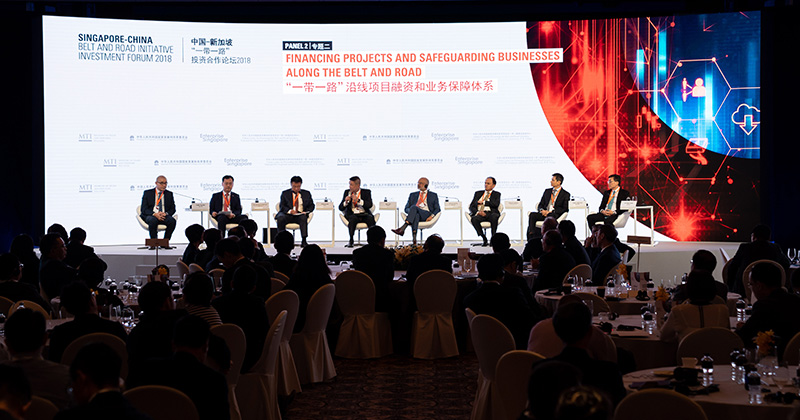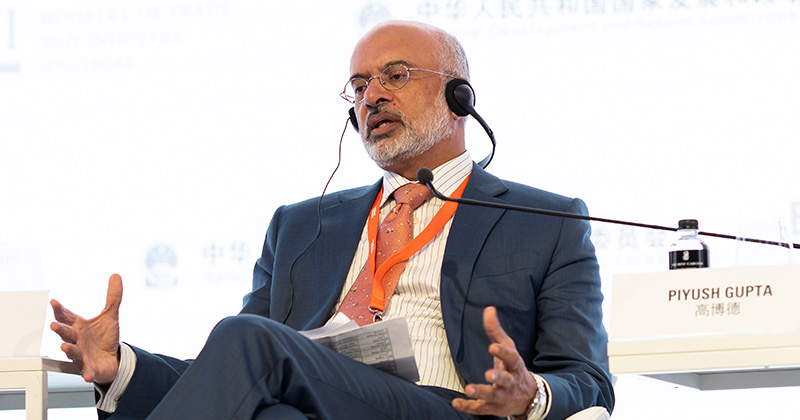This is second article of a two-part series on the Belt and Road Initiative (BRI). For the first article, click here.
While the BRI has the potential to become a major engine of economic growth for the more than 60 countries linked to it, more private sector involvement is necessary to bridge funding gaps.
Estimated at US$4 trillion to US$10 trillion over the next five years, the capital needs of the BRI are massive. And that’s not all: many projects are located in countries with limited infrastructure and regulatory frameworks, heightening political and operational risk – this makes private sector involvement necessary to bridge these funding gaps.
Given Singapore’s position as a key global and trade finance hub and reputation as a world-class arbitration centre, it has a pivotal role to play in improving the bankability of BRI projects and increasing much-needed private sector participation.
Increasing private sector participation
Panel speakers at the inaugural Singapore-China BRI Investment Forum in October 2018 spoke about the need for transparency, sustainability, inclusiveness and private sector involvement in order for multilateral projects like the BRI to succeed.

Such projects should be handled by the private sector, which will be able to source the required funds on its own, advised Mr Pang Yee Ean, Director-General for Investment Operations, Asia Infrastructure Investment Bank (AIIB).
According to Mr Pang, there is a need for multilateral development banks (MDBs) like AIIB to participate in the early, high-risk stages of the project, such as during construction, thereby easing the way into the respective markets. “They can then invite non-traditional sources of funding (such as insurance) when the projects have stabilised and have lower risk. MDBs also ensure projects are treated fairly by local governments,” he said.

“BRI companies need to look at international sources of funding as there are many pools of savings available in the West,” said Mr Piyush Gupta, Group CEO, DBS Holdings Ltd. There is a caveat, however. He noted that BRI projects must be packaged attractively to bring in investors.
In this respect, Singapore professional services provides (PSPs) have a big role to play. They can contribute by:
- Attracting capital from the private sector and turning opportunities into investible projects. One way to do this is by packaging them with attractive public-private risk allocations.
- Helping bidding companies and consortiums to properly understand and manage risks, through financial feasibility and risk assessment, modelling valuation, due diligence and tax structuring.
- Easing the way for Chinese and Singapore companies. Besides introducing both parties to potential partners, PSPs can work on developing and fine-tuning policies and institutional mechanisms, evaluating new opportunities and developing strategies for entering new markets.
Mr Pang also offered an alternative, advising that “governments should to stop financing bankable projects such as ports, toll roads, and power infrastructure, and instead raise bonds for these projects.”

This however does not the negate the role of local governments in the overall success of BRI projects. “The social benefits and costs of projects do not always translate in terms of the economic bottom line, but governments can get on board to try and monetise the social benefit/cost to make them transparent,” Mr Gupta added.
Navigating the legal complexities of multilateral BRI projects
Another of the key challenges cited by panel speakers was the diverse legal, cultural and institutional frameworks prevalent along the Belt and Road. This is often the cause for concern and may deter investors from otherwise attractive projects.
“Companies should anchor business contracts in Singapore and use the country as the location for arbitration, given the country’s transparent legal framework and strong rule of law,” said Mr Chan Leng Sun, Deputy Chairman, Singapore International Arbitration Centre, which handles more than 200 new cases annually.
Out of these 200, 63% comprises trade and shipping-related issues. Mr Chan also noted that Singapore is the third-most popular arbitration location globally.

Companies should also include an arbitration clause in their contracts, advised Mr Tay Peng Cheng, Partner and Joint Head (Energy, Projects, and Construction Projects), Wong Partnership. He added that the Singapore International Commercial Court (SICC) is able to mediate commercial disputes, even if neither party is from Singapore or governed by laws in other jurisdictions. As a division of the Singapore High Court and part of the Supreme Court of Singapore, it is able to deliver judgments that can be recognised all over the world. The Singapore Mediation Convention, which is expected to be signed in August 2019, will make it easier for businesses to enforce mediated settlement agreements reached in countries of their cross-border counterparts.
With respect to the BRI, the Singapore Supreme Court signed a Memorandum of Understanding (MOU) that sets out guidelines for enforcing China and Singapore rulings in each respective country, with the Supreme People’s Court of China that sets out guidelines for the enforcement of China and Singapore rulings in each country.
Mr Tay also took note of yet another avenue for arbitration available in Singapore: the Singapore Mediation Centre, which is well equipped to deal with cases involving international elements. Mediation cases are confidential, fast-paced and cost less, and a large number of cases that end up in mediation are resolved.
This is second article of a two-part series on the Belt and Road Initiative. For the first article, click here.

